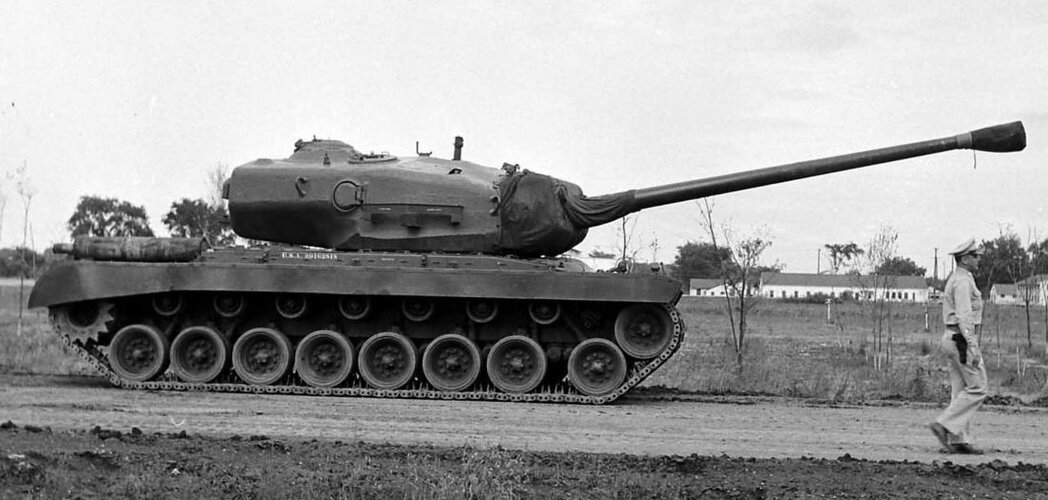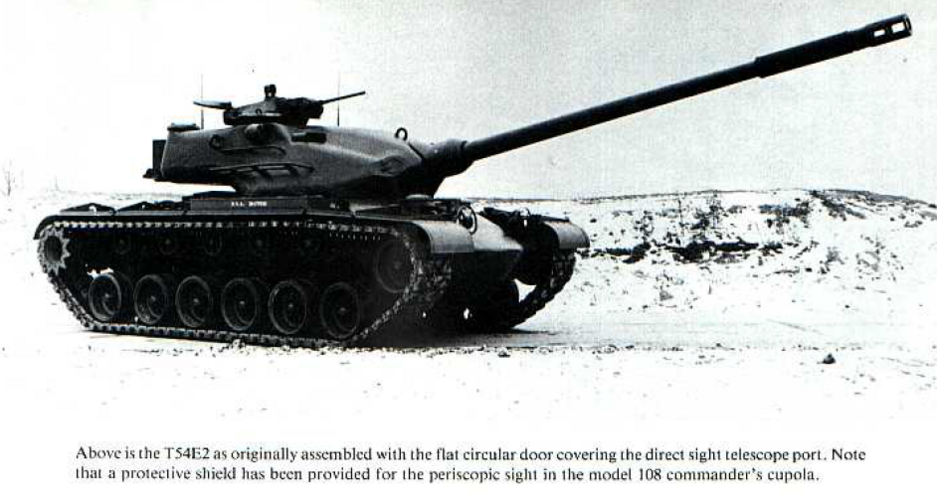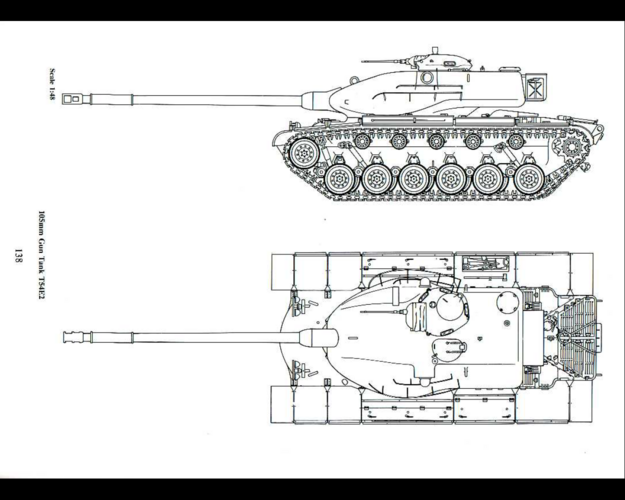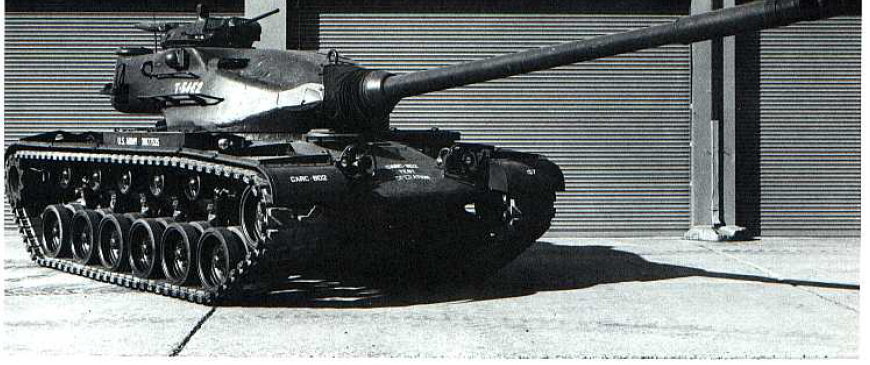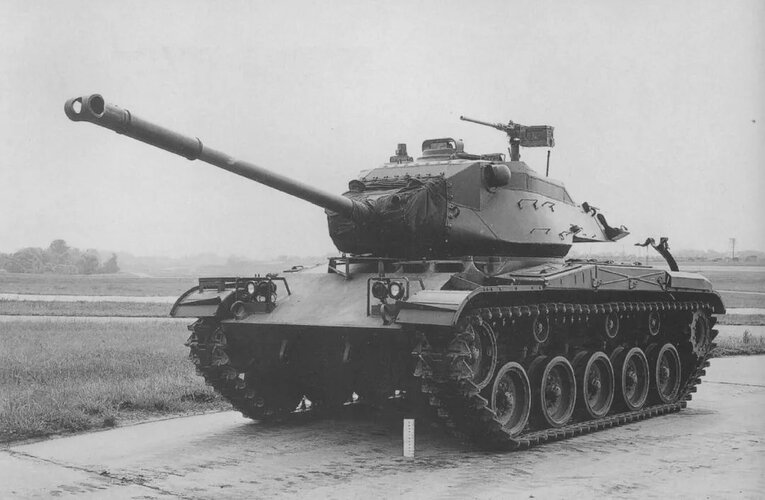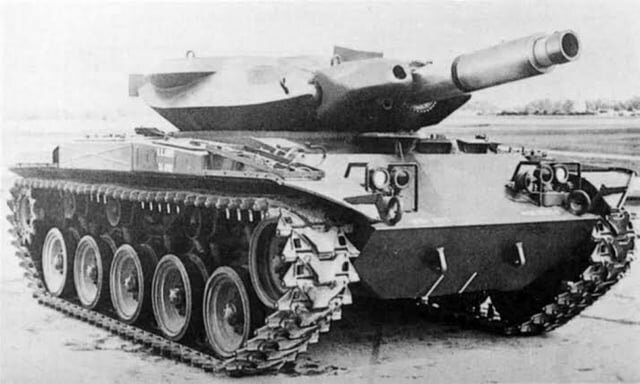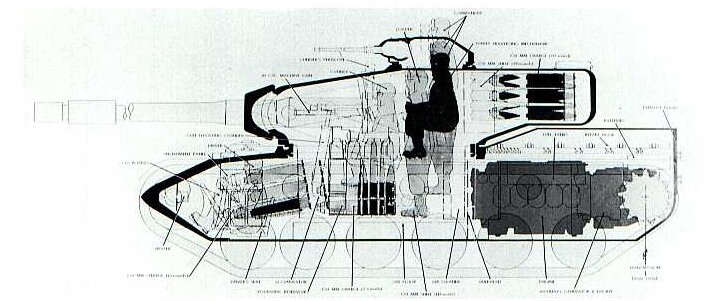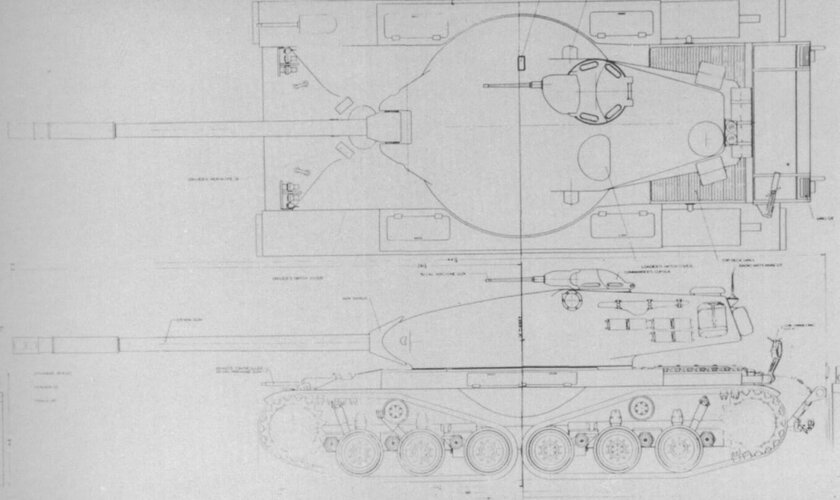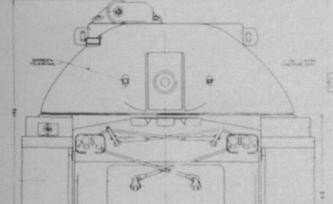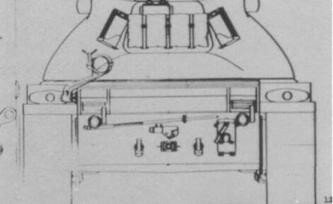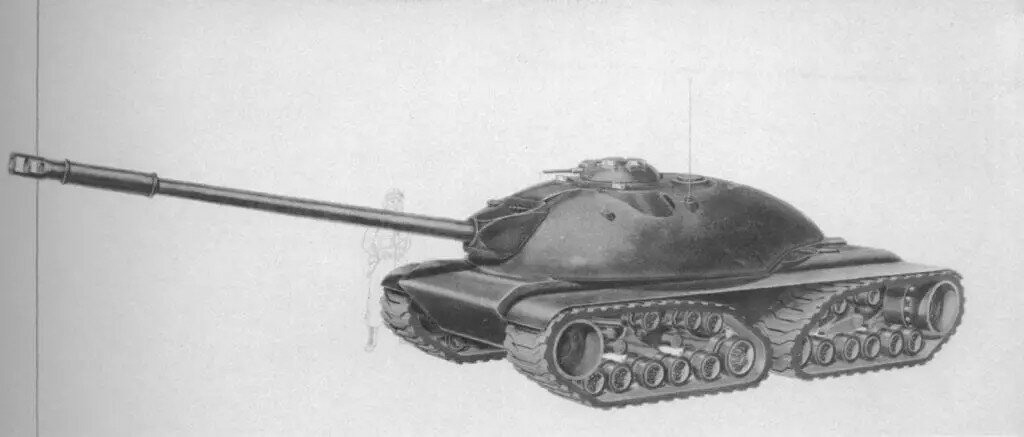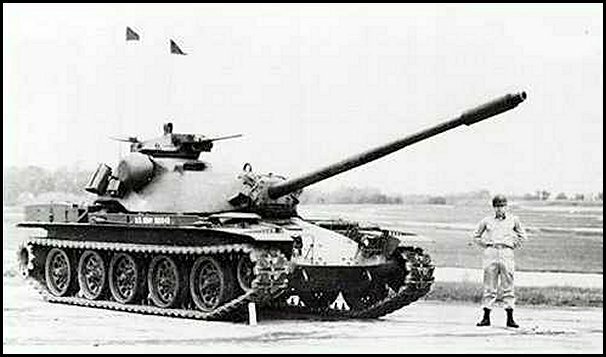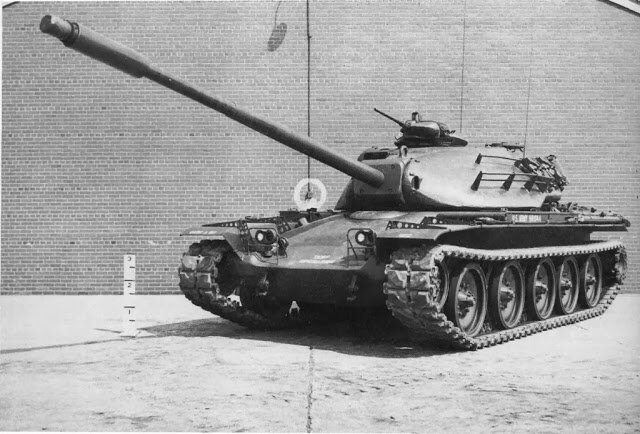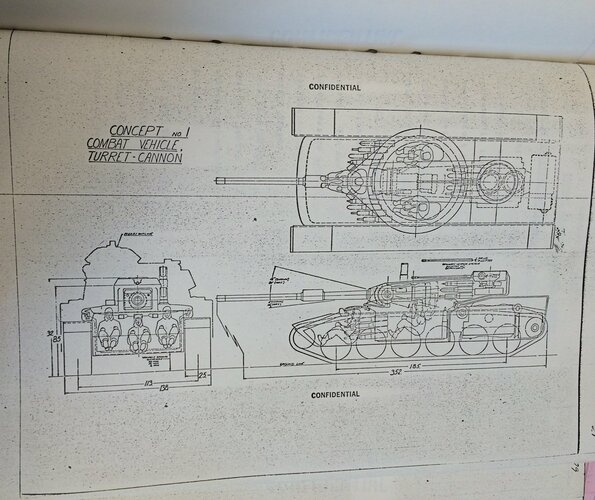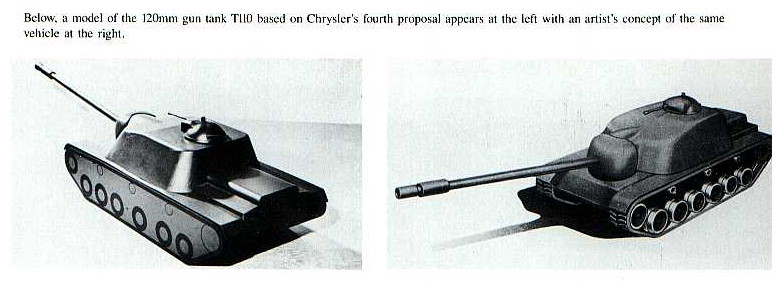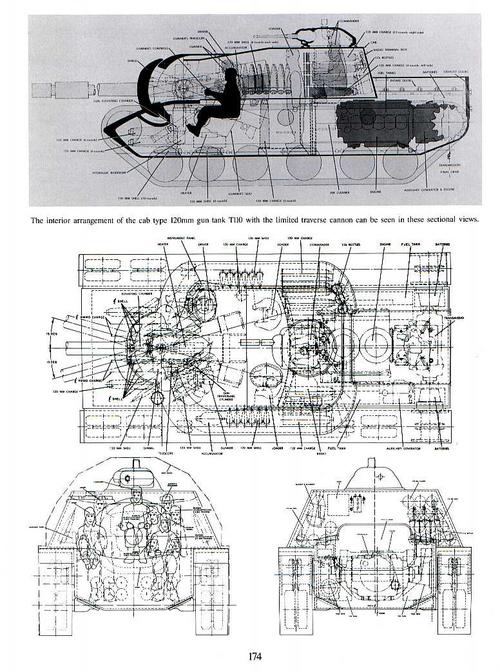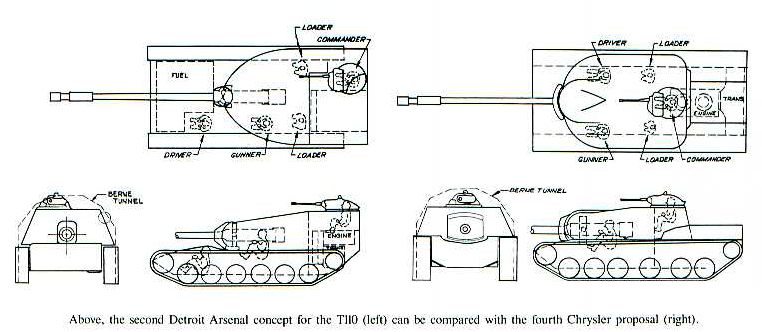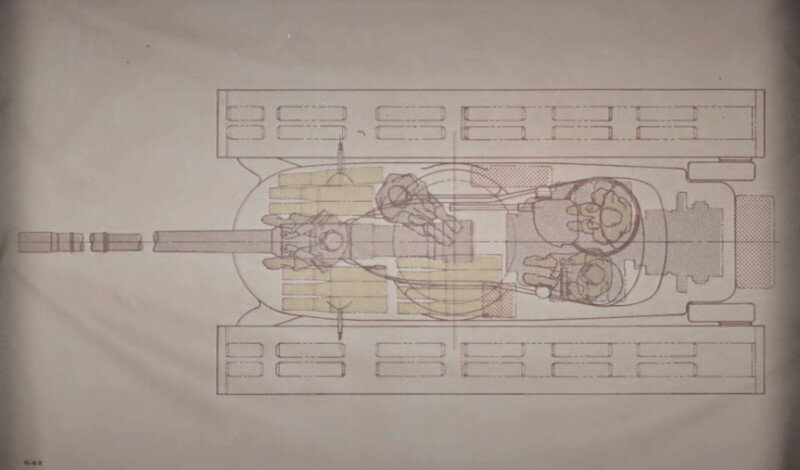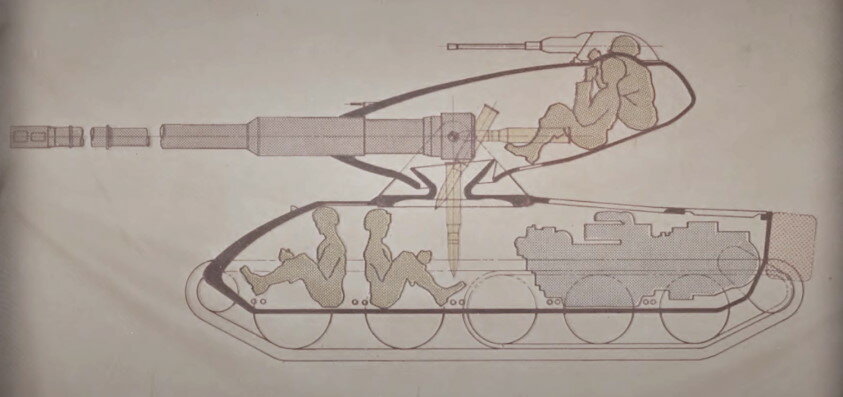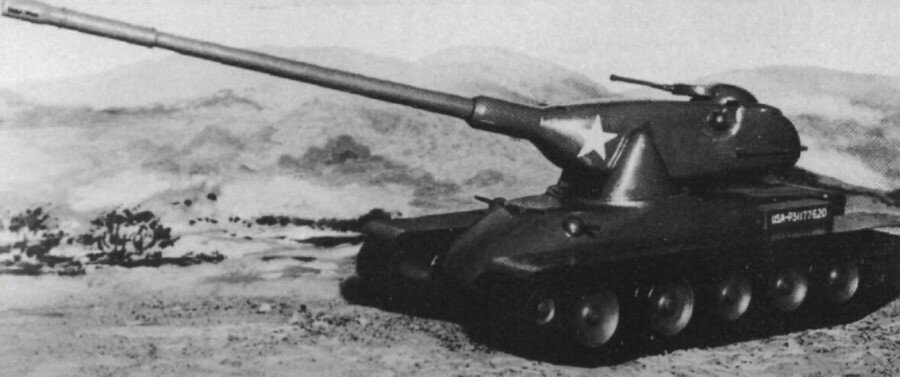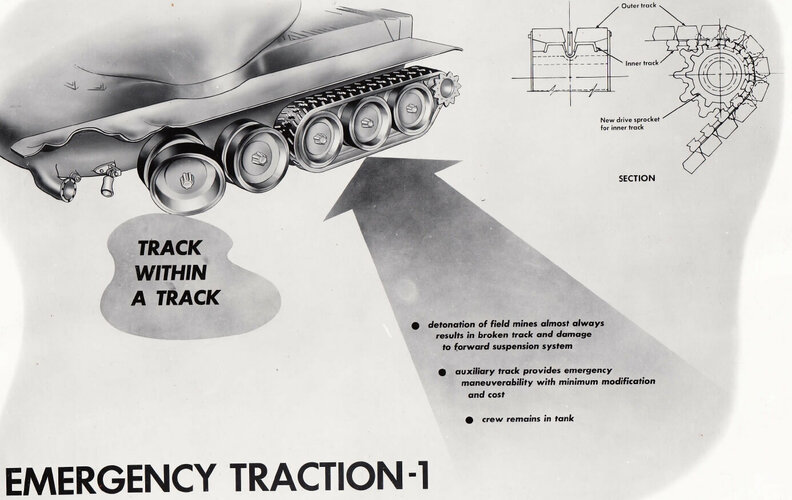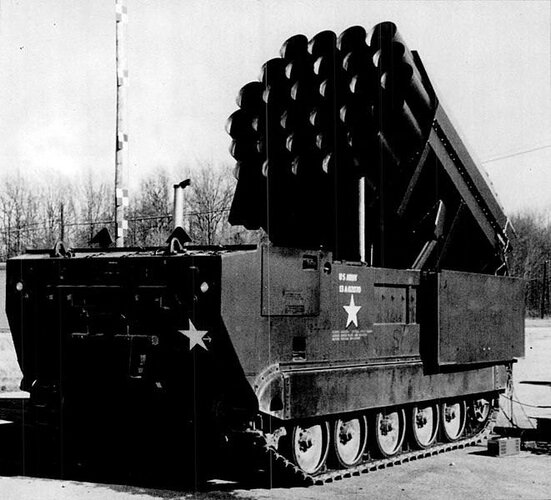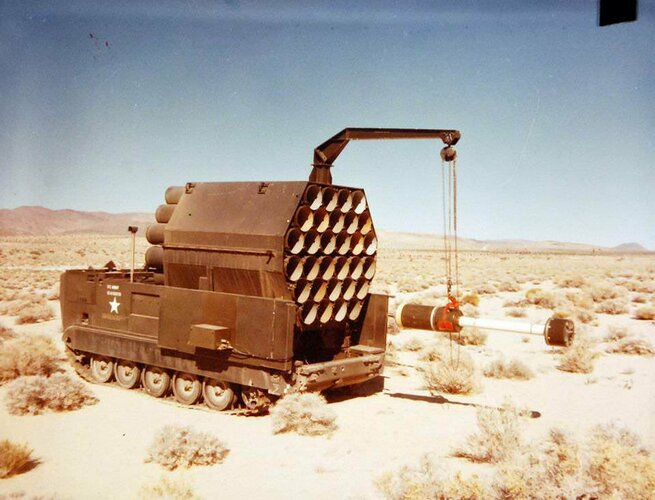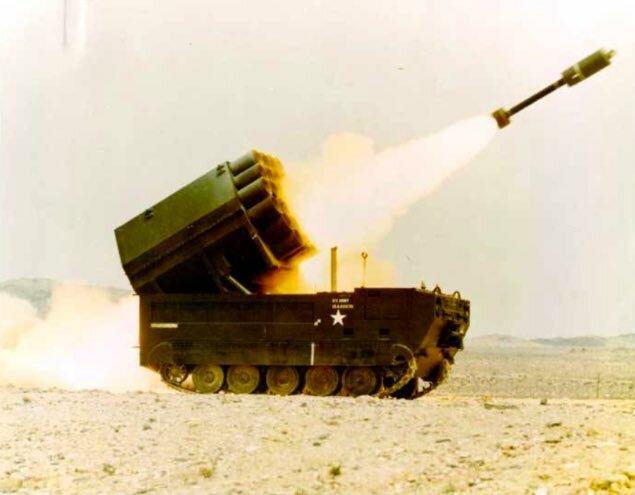T110
The original project of T110 was rejected by the military because of its excessive size (it wouldn't fit in the standard tunnel) and a poorly allocated commander tower, placed on the left. The company suggested another variant – the tower was placed at the center of the body, but, to solve the issue with fitting in the transmission, the driver was placed in the combat compartment. The latter was also ill-received by the military and the driver was returned to the original place. When endorsing the project with the Detroit tank arsenal, the drive layout was decided to be remade into rear-wheeled. Now it was necessary to remove the commander tower altogether to keep the size in check. In addition, according to the order, instead of the AV-1790 engine, they had to use an air-cooled AOI-1490 with the power of 700 HP and the same XTG-500 transmission. The 120-mm T123E1 gun was placed in a solid setting. Now there appeared problems with the power unit: it was out of reach. It was decided to make the engine “roll out” on the rails through a large manhole in the body’s rear. But a manhole like that drastically lowered the body’s rigidity.
After all these troubles, Chrysler came up with the fourth variant of the tank. Now the AOI1490 engine and XTG-510 transmission were placed in the rear compartment of the tank, in a classic manner. The length of the body increased, but it would solve most of the problems with the power unit. The 120-mm gun was placed solidly in the mask, providing horizontal firing angles of 15 degrees to the sides and inclination angles of +20 degrees and -10 degrees. Constructing the cannon’s mask proved problematic. It has to be 230mm thick and weigh just under two tons. The body’s forehead sheet and the cabin defense was equal to a 127-mm sheet angled at 60 degrees. The support weapons included a 7,62mm machinegun, that was paired with the cannon and a 12,7-mm machinegun located in the commander tower. The telescopic sight T156 was used for shooting. M16A1 periscopic sight was used as a back-up. The tank commander was able to use the T53 “OPTAR” rangefinder, installed on the top of the cabin. “OPTAR” was an optical rangefinder, used to evaluate the range covered by light impulses. Needless to say that this device, preceding the laser technology, wasn't very effective and suffered from light dazzles.
The driver was placed on the left side – near the gun. With such driver and gunner placement, the forehead armor had to be made with a lesser angle, so it was required to make it much thicker. This was the main downside of utilizing an immovable cabin instead of a tower.
The next logical step – replacing the cabin with a tower, that was possible while staying in the planned 50-ton limits of the machine. As a result, a classically composed tank was made, which were utilized many of the already existing units, were able to be built fairly quickly and cheaply. This tank became the fifth Chrysler project. The 120-mm gun was solidly fastened to the tower mask, having the standard 2,15-m epaulet like in the M103 heavy tank. The main difference from the standard composition became the placement of the gunner and the commander to the left of the gun. The team was reduced to four people – one of the loaders was excluded, replaced by a mechanical loader. The “OPTAR” T53 rangefinder was installed on the left side of the tower and could be used by both the gunner and the commander of the tank. Compared to the tower-less variant, the new T110 was providing better firing ability and quicker target hitting. The project had made it to the final stage – it was constructed and shown to the specialists of the Detroit arsenal in the form of a full-sized tank model. However, by that time, the modification project of the T43-T43E2 heavy tank, which eventually became the M103, was successfully accepted. That, together with the decision to concentrate the attention on lighter tanks, lead to the end of all work on the T110 project.

